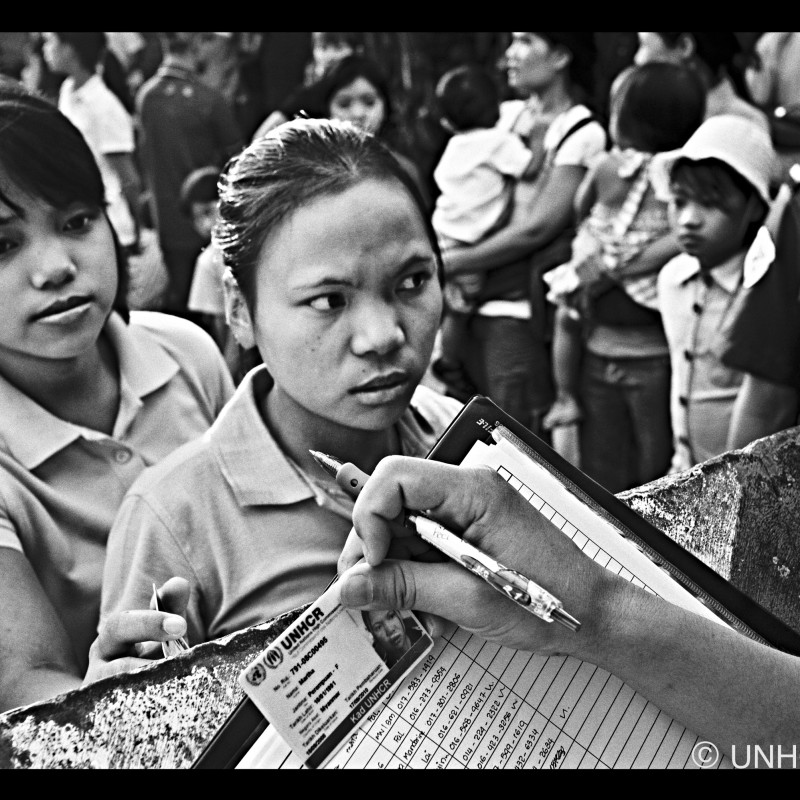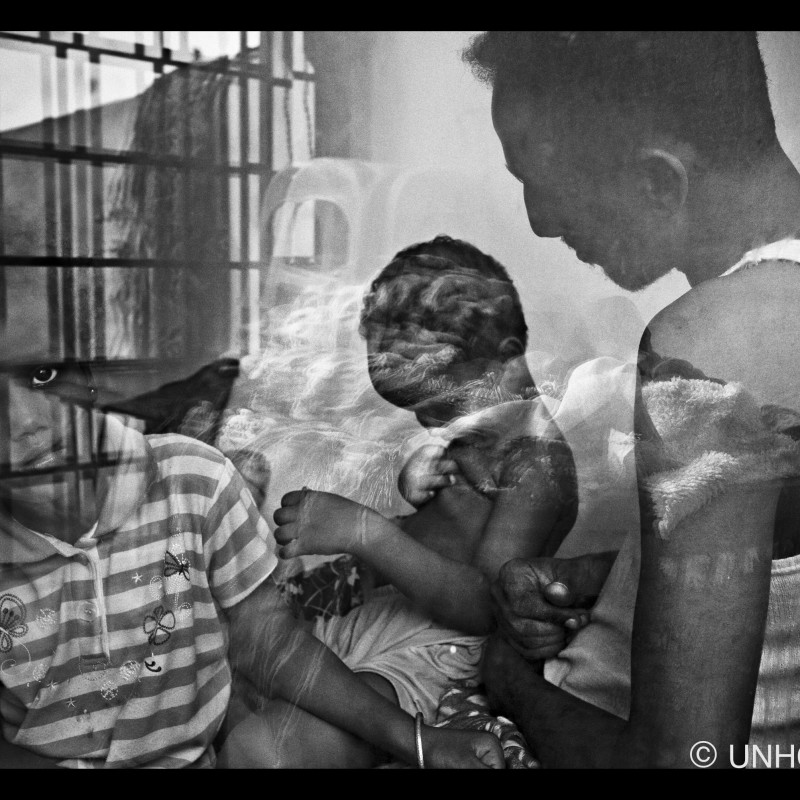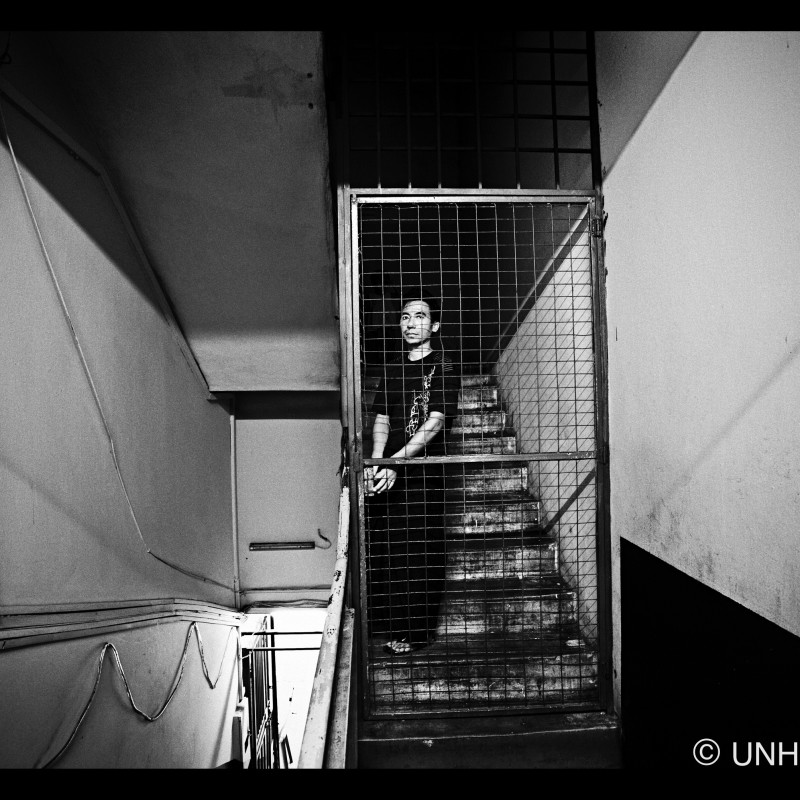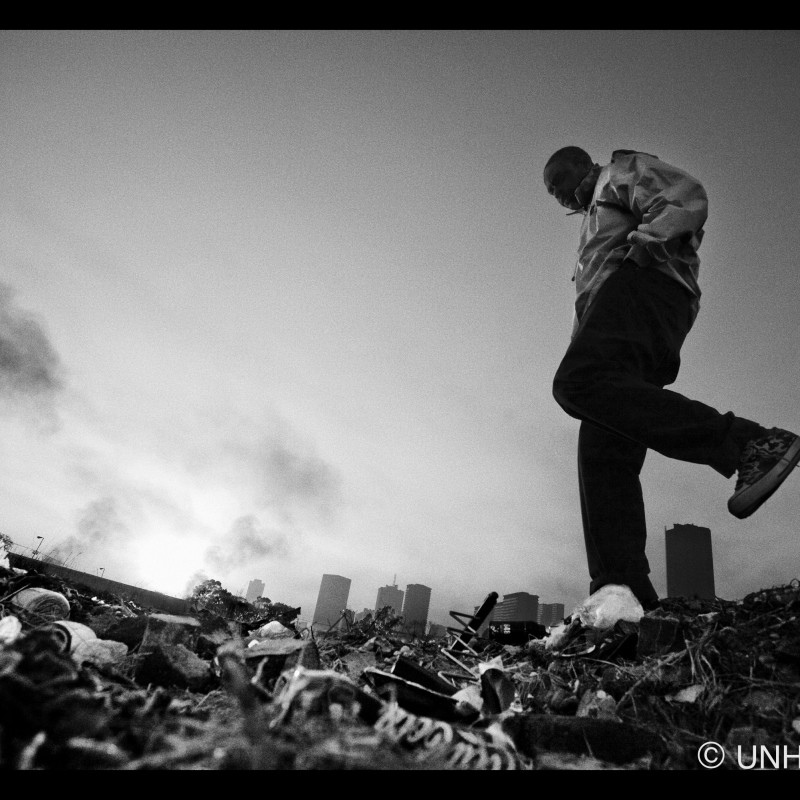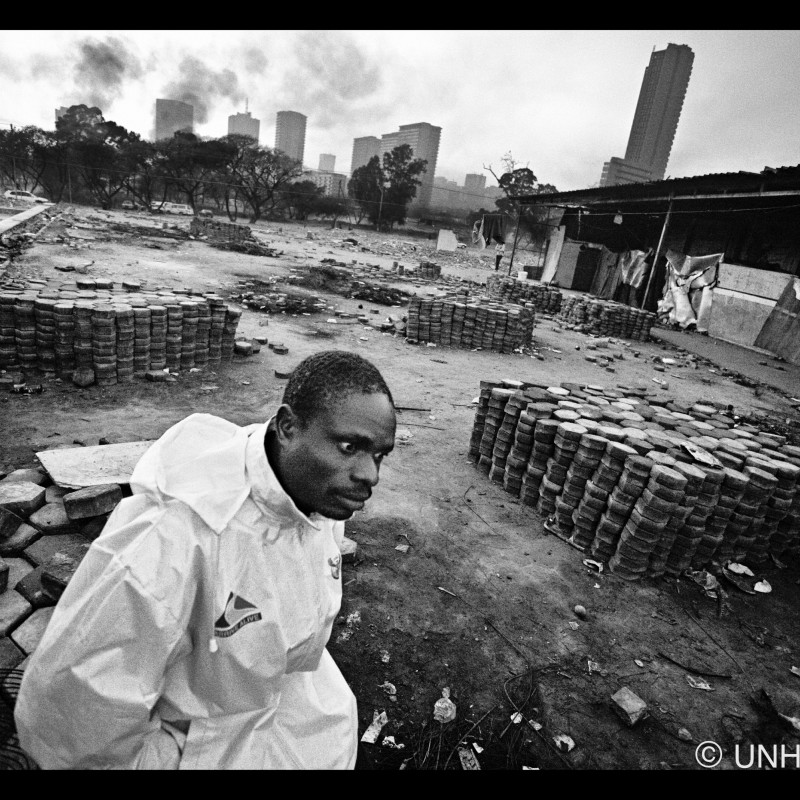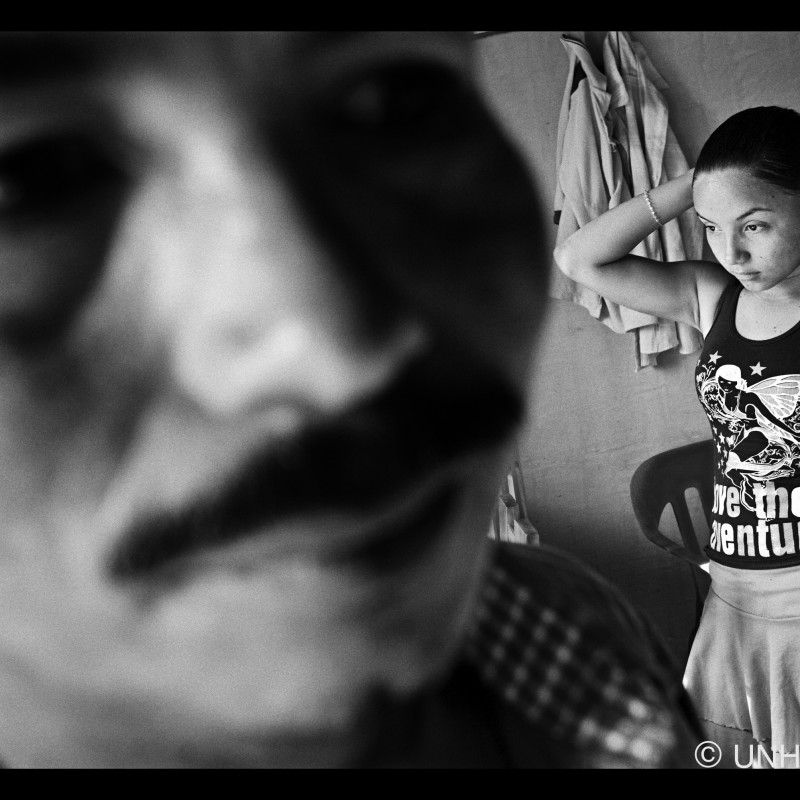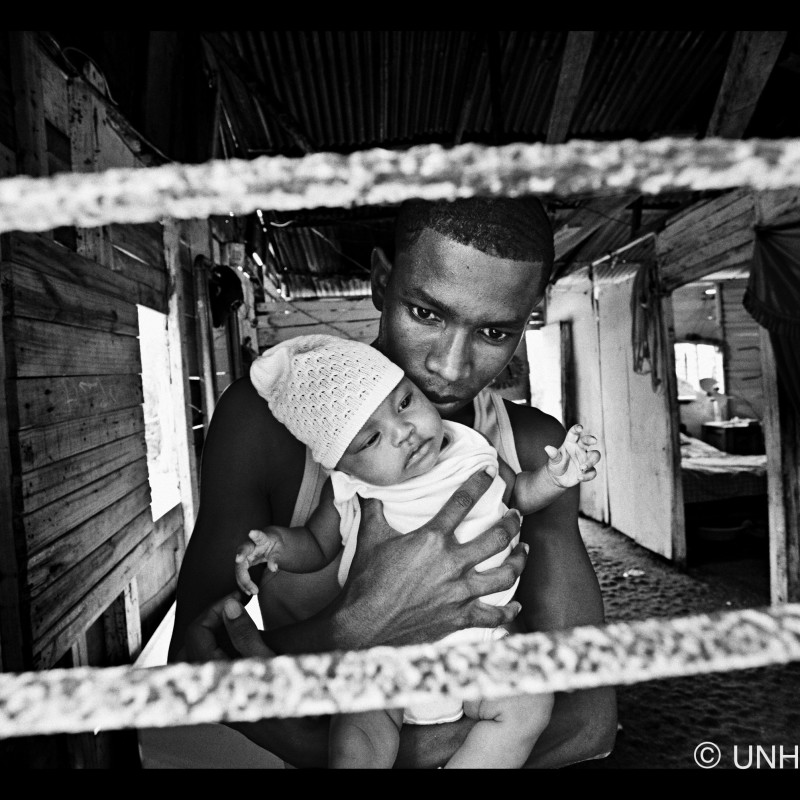Invisible in the city
The iconic image of refugees is row upon row of white tents in a sprawling emergency camp. But the reality is that only one-third of the world’s 10.5 million refugees now live in camps. Like 3.3 billion other people on this planet, they have been steadily moving to cities and towns, a trend that has accelerated since the 1950s. More than half the refugees UNHCR serves now live in cities, with the remainder outside camps living in rural areas. In the future, more and more refugees will be trying to survive in cities, as will former refugees who return to their place of origin and those displaced inside their countries.
Unlike a closed camp, cities present obvious opportunities to stay anonymous, make money and build a better future. But they also present dangers: refugees may not have legal documents that are respected, they may be vulnerable to exploitation, arrest and detention, and they can be in competition with the poorest local workers for the worst jobs.
In the past, many refugees in cities were young men with the skills and savvy to survive on their own. These days they are increasingly women – who may have been raped or molested in escaping their countries – children and older people who all need special help. In large, anonymous cities they often have a hard time finding their way to UNHCR for the support they need, and the UN refugee agency, for its part, cannot provide services as easily as in a camp where it has 80,000 refugees on its doorstep.
What is clear is that wherever refugees are – in cities or in camps – they have the same human rights, and both UNHCR and host states have an obligation to protect them and respect their refugee status.
To illustrate the resilience of refugees in cities, their hopes and dreams as they struggle to simply survive, make a living and care for their families, UNHCR sent renowned photographer Zalmaï to cities on several continents.
Zalmaï is a former Afghan refugee. At 15, he spent three months in his grandmother’s basement hiding from the Soviet army and Afghan authorities before fleeing to Switzerland, where he was educated and still lives.
“What struck me about the displaced people I photographed,” Zalmaï says, “is that they don’t ask much. They just want protection and basic human rights. They don’t ask, ‘give us money,’ or a house or a job. Everybody just asks for protection.”
Zalmaï: An affinity for the uprooted
Award-winning photographer Zalmaï has travelled the world exploring the theme of exile and uprooted people in many countries, including India, Chad, Jordan, Lebanon, Mali, the Philippines, Indonesia and Afghanistan. Usually shooting in black and white, he has frequently collaborated with the UN refugee agency.
For the project Invisible in the City, Zalmaï documented the struggles and hopes of refugees and people displaced within their own countries in South Africa, Malaysia and Colombia, in what turned out to be one of his most challenging projects.
“These people are living inside the cities, but they don’t exist,” Zalmaï says. “They are hard to find. They are afraid of deportation, of the police, of detention centres. They feel they are vulnerable. Sometimes, their only protection is the big city itself. So, they just try to be invisible.”
Although he dislikes being stereotyped as a former refugee (having fled his native Afghanistan at 15 after the 1979 Soviet invasion), Zalmaï believes that experience gave him a special rapport with many of his subjects.
He said his most prized “trophy” is not one of his numerous photographic awards, but a compliment he received from a Chin refugee elder in Malaysia, who told him: “You look at us differently from other people. You respect us as human beings. If we had more people like you, we could have a better life.”
Malaysia: Refugees helping themselves
When UNHCR organized a free health clinic for refugee women in Kuala Lumpur a few years ago, staffed by Malaysian doctors and nurses from the capital, some of the volunteer medical workers were astonished to learn there were actually refugees in their country.
That’s how invisible most of the 67,800 refugees in Malaysian towns and cities are. They don’t live in camps, but in low-cost flats and houses alongside Malaysian homes. The refugees, overwhelmingly from Myanmar, but a few from Afghanistan, Somalia and other countries, live in tight-knit groups of as many as 20 or 30 in one small flat. Often they are afraid to go outside for fear of being stigmatized for the colour of their skin, or of being detained for being in the country illegally.
As in many other Asian countries, even official UNHCR refugee status does not always afford adequate protection. Refugees are not allowed to work legally, so are subject to exploitation in dirty, dangerous and difficult jobs that locals do not want. “When I look for a job, the employers always want to see my identity card,” says one Afghan refugee, adding: “All my life I never had an identity card.” A young ethnic Chin man from Myanmar doesn’t want charity: “We don’t want to beg for help. Let us work and we will take care of ourselves.”
More than in many other countries, refugees in Malaysia have banded together to help themselves in the absence of official services. UNHCR, non-governmental organizations and volunteers support these initiatives, but they are largely driven by the refugees themselves. Even without leaving the safety of their homes, refugee women help support their families by selling embroidered cloths, knitted shawls, greeting cards, traditional food, beadwork and jewellery, with Malaysian volunteers acting as the go-between to the market.
Most remarkable are their community-based schools, usually run by refugee teachers and volunteers. Although they fill a vital need, they still can’t provide education for all 10,000 refugee children of school-going age registered with UNHCR. On another level, the community groups provide important support to people in exile. “I have lost my family and my homeland,” says one Myanmar refugee in Malaysia who now belongs to a women’s group. “It helps me to have this new family of sisters to give me strength.”
South Africa: searching for coexistence
South Africa is one of the rare countries in Africa where registered refugees and asylum-seekers can legally move about freely, get social services, and compete with locals for jobs.
While those valuable rights exist officially, the reality is that refugees are often competing with the poorest locals for the worst jobs – especially in the last few years as millions have fled political and economic woes in Zimbabwe.
“In South Africa, it was very difficult for me to see people just sleeping in parks and abandoned warehouses,” says photographer Zalmaï. “They are in the middle of big cities but they don’t even have a roof for themselves. In Johannesburg, there are very rich people, and there are also refugees who are going through rubbish dumps.
“Most of these refugees had a good life before,” Zalmaï continues. “The most difficult for me is when they lose their dignity and hope and they end up in the garbage trying to feed themselves, and on top of that they are looked upon badly by the local people.”
Not surprisingly, over the last decade, when times turned tough, refugees in towns and cities sometimes became the target of the frustrations of locals. In May 2008, a tide of xenophobic violence erupted in Johannesburg and quickly spread to other parts of the country, killing more than 60 people and displacing about 100,000 others.
In Atteridgeville, on the edge of the capital city of Pretoria and site of some of the worst violence, South African and Somali traders – assisted by UNHCR – actually negotiated a detailed reconciliation agreement to settle the original trade dispute that led to the torching of Somali-run shops. The UN refugee agency also supports work by the Nelson Mandela Foundation to counter xenophobia.
“We are all descended from Eve and Adam and we believe that . . . people can live together,” says Abdul Hassan of the Somali Association of South Africa. “I think in the schools we must teach these people about other countries.”
Joshua Bokombe, a 40-year-old Congolese refugee who lost everything in the violence in Johannesburg, says simply: “I liked the country and I wanted to stay, but the country doesn’t want me.” The father of seven adds says “If I were a woman, I’d cry every day. But I’m a man, I can’t do that. I must always be strong for my family.”
Colombia: A struggle for rights
Overlooked by the rest of the world, decades of violent internal conflict have forced more than 3.5 million Colombians from their homes, with more fleeing nearly every day. Some flee abroad, but about 80 percent head for urban centres within the country.
For most, towns and cities represent much-prized safety after seeing loved ones killed, or rescuing their children from threats of forced conscription. But the places they can afford to live are usually the poorest barrios – a landslide-prone cliff or a flood-plagued beachfront. Often these areas offer no running water, electricity, street lighting or sewage system.
Rural people and farmers also often find it a challenge to make a living in a town or city. In the countryside, Wilson and Blanca Martinez (whose names have been changed for their own protection) found it easy to feed their seven children. “We had our rice and our plantains,” says Wilson, now living on the outskirts of the capital Bogota. “I just had to go to the river and bring some fish for lunch. Now it’s not that easy. Here we have to pay for everything. Every day we have to look for the money to eat.”
Traumas also follow displaced Colombians. Formerly independent women used to working or staying alone now need to have others around constantly. Children tremble at the sight of a policeman, and get embarrassed by the menial jobs their parents are forced to take in the slums.
UNHCR is working with the Colombian government to make services available to displaced people. An important first step is a long-standing collaboration under which more than 3 million displaced Colombians have received identity cards.
Documentation encourages local authorities to respect the rights of the displaced, such as education. Both displaced parents and children can often get an education – frequently supported by UNHCR – in towns and cities that they couldn’t get while they were on the run, or in areas controlled by irregular armed groups.
Latin America knows well the problems of displacement; less than two decades ago, a large number of refugees fled military dictatorships and sought protection abroad. Today, after the restoration of democracy throughout most of the region, countries are setting an example for the world by showing special solidarity – opening their doors to refugees, protecting them and helping them integrate into society.
